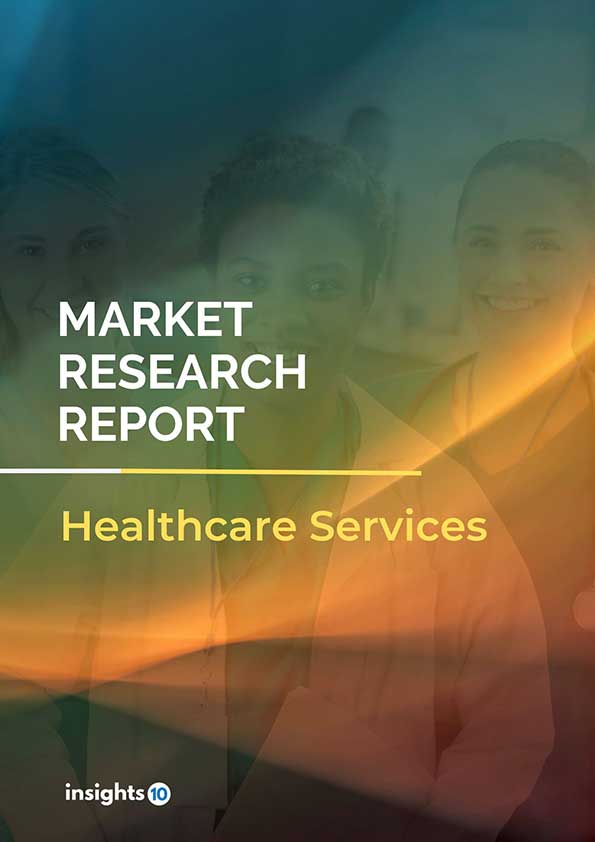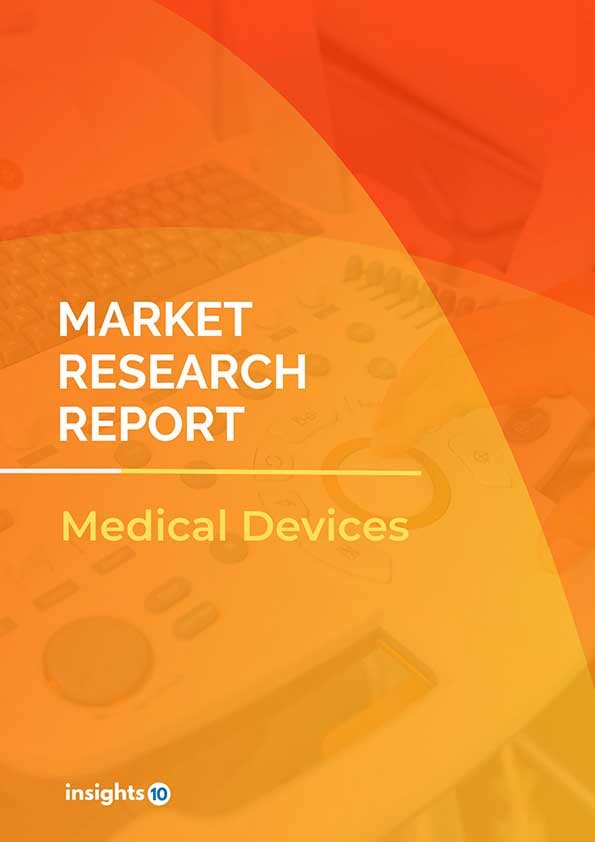Philippines Dental Care Market Analysis
The Philippines' dental care services market size is at around $78.94 Mn in 2022 and is projected to reach $129.66 Mn in 2030, exhibiting a CAGR of 6.4% during the forecast period 2022-2030. The Philippines is the world's selfie capital, and services for cosmetic dentistry and orthodontics are growing appeal among the younger population. Key international players for clear aligners like Invisalign, K-line, and Orthero are expanding their operations to meet patient demands. This report by Insights10 is segmented by treatment type, age group, and clinical setup, and demography and provides in-depth insights into opportunities for targeting profitable prospects.
Buy Now

Dental Care Services Market Executive Summary
The Philippines' dental care services market size is at around $78.94 Mn in 2022 and is projected to reach $129.66 Mn in 2030, exhibiting a CAGR of 6.4% during the forecast period 2022-30. Healthcare expenditure in the Philippines is relatively low compared to other countries. According to data from the World Bank, the total health expenditure as a percentage of gross domestic product (GDP) in the Philippines was around 4% in 2019. This is significantly lower than the global average of around 10%. A large portion of healthcare expenditure in the Philippines is financed through out-of-pocket payments, which can be a significant burden for many Filipinos. The government has been working to increase funding for the healthcare system through initiatives such as the Universal Health Care Law, but more needs to be done to improve healthcare financing and reduce the burden of out-of-pocket payments on individuals and families.
The government of the Philippines runs a network of public dentistry clinics that offer basic dental services such as tooth extractions, fillings, and cleanings at a low or no cost. However, the availability and quality of services at these clinics can vary depending on the region and financing. Private dental clinics in the Philippines offer a broader range of services at a higher cost, including more complex operations such as root canals, crowns, and implants. Some Filipinos have dental insurance through their work or the government-run national health insurance program, PhilHealth. These insurance plans can assist in covering the price of dental care. Many citizens pay for dental care out of their own pockets, which can be costly.
Braces and clear aligners are the most popular services in the Philippines Dental Services Market right now. Because the Philippines is the world's selfie capital, these services are growing appeal among the younger population. Cosmetic dentistry and orthodontics are slowly gaining traction in the country. The dental care market in the Philippines has now valued at $78.94 Mn and is predicted to expand more slowly than in other Asian countries, at a CAGR of 6.4% by 2030, reaching $129.66 Mn. The report by Insights10 delves deep into the factors that drive the market growth and with an awareness of market limiting factors that can richly benefit competitive strategies for dental care providers in the Philippines.

Market Dynamics
Market Growth Drivers
General consultation and teeth cleaning are the most opted-for services but still, General Dentistry has an overall share of around 15 to 20% of the market revenue as these services are the least expensive as they are priced around $18- $27. In the Philippines, braces are considered to be fashionable and thus are quite frequently opted for. They are also expensive, especially the clear aligners and hence this service is a major revenue contributor as the need for aesthetics with a higher level of concealment by the conscious youth drives this demand. In short, major revenue contributors are General Dentistry, Orthodontics, Endodontics, and Prosthodontics. Invisalign, Orthero, and K-line used to be the major players in the Philippines dental market for the production of braces, especially clear aligners. Their market share was around 40% for Invisalign, 25% for K-line, and around 10% for Orthero in the domain of clear aligners. A major growth curve in the Philippines is dental tourism, where a patient from other countries come for their dental treatment as it is more affordable and has highly skilled professionals.
Market Restraints
Starting a dental corporation needs significant capital, and small enterprises may have limited access to funding. Dental organizations necessitate costly equipment and supplies, which can be a considerable barrier to entry for new enterprises. Dental firms may be unable to develop profitable niche niches or properly target customers. Compliance with healthcare laws, including those imposed by the Professional Regulation Commission (PRC), can be time-consuming and costly. People in the Philippines are less inclined to seek dental care due to limited dental coverage, making it difficult for dental firms to make money. The general public may be unaware of the importance of oral health, resulting in low demand for dental treatments. There are only a few skilled specialists who can deliver high-quality services.
Competitive Landscape
Key Players
- The Medical City Dental Center (PHL)
- Asian Hospital and Medical Center Dental Clinic (PHL)
- Makati Medical Center Dental Clinic (PHL)
- St. Luke's Medical Center Global City Dental Clinic (PHL)
- Cardinal Santos Medical Center Dental Clinic (PHL)
- Manila Doctors Hospital Dental Clinic (PHL)
- Philippine General Hospital Dental Clinic (PHL)
- Metro Dental
- Dental First
- Dental Avenue
- DentalWorks
- DentalPro
Healthcare Policies and Regulatory Landscape
The regulatory body for dental services in the Philippines is the Professional Regulation Commission (PRC) under the Board of Dentistry. The PRC is responsible for the registration, licensure, and regulation of dental professionals in the country. The Board of Dentistry, which is under the PRC, sets standards and guidelines for dental education and practice and also conducts exams for dental practitioners. The Professional Regulatory Board of Dentistry has the authority to enact a Code of Ethics and a Code of Practice for the practice of dentistry, dental hygiene, and dental technology. The Philippine Dental Association, Inc. presented the Board with a draught copy of "Proposed Amendments to the Philippine Code of Dental Ethics" for review. The Board pondered on the provisions of the abovementioned draught and improved them before accepting and incorporating them into its rules and regulations.
Reimbursement Scenario
In the Philippines, dental treatments are usually paid for out-of-pocket by patients. There are some health insurance plans that cover dental treatments, but they are not as common as those that cover medical treatments. Some companies and organizations may also provide dental insurance for their employees as part of their benefits package. However, the Philippine Health Insurance Corporation (PhilHealth) does offer limited coverage for dental treatments for certain conditions such as Oral Cancer, and for certain procedures such as extraction and fillings. However, coverage is limited and not all procedures are covered.
1. Executive Summary
1.1 Service Overview
1.2 Global Scenario
1.3 Country Overview
1.4 Healthcare Scenario in Country
1.5 Healthcare Services Market in Country
1.6 Recent Developments in the Country
2. Market Size and Forecasting
2.1 Market Size (With Excel and Methodology)
2.2 Market Segmentation (Check all Segments in Segmentation Section)
3. Market Dynamics
3.1 Market Drivers
3.2 Market Restraints
4. Competitive Landscape
4.1 Major Market Share
4.2 Key Company Profile (Check all Companies in the Summary Section)
4.2.1 Company
4.2.1.1 Overview
4.2.1.2 Product Applications and Services
4.2.1.3 Recent Developments
4.2.1.4 Partnerships Ecosystem
4.2.1.5 Financials (Based on Availability)
5. Reimbursement Scenario
5.1 Reimbursement Regulation
5.2 Reimbursement Process for Services
5.3 Reimbursement Process for Treatment
6. Methodology and Scope
Dental Care Market Segmentation
By Product (Revenue, USD Billion):
In terms of product category, the toothbrush had the highest revenue share (26% in 2020). The rising incidence of cavities, sensitivity, and gingivitis has increased toothpaste usage significantly in both emerging and wealthy countries. As a result, toothpaste is now an essential part of good dental health. In the oral care sector, toothpaste thus commands the biggest market share.
- Toothbrush
- Toothpaste
- Mouthwash
- Dental Floss
- Denture Care
By Age Group (Revenue, USD Billion):
Adults lead the oral care market over the projection period based on age group. The overall expansion of the oral care industry is being driven by adults' increasing consumer knowledge of mouth cleanliness and care. Adult oral care products come in a variety on the market.
- Children
- Adults
- Geriatric
By Sales Channel (Revenue, USD Billion):
The specialty stores dominate the oral care market over the projection period based on the sales channel. Specialty shops carry a broad selection of goods. The employees of specialty businesses provide customers with precise product information. With the aid of specialty shops, customers can also find all types of dental care items under one roof.
- Hypermarkets/Supermarkets
- Specialty Stores
- Drug Stores &Pharmacies
- Convenience Stores
- Online Sales Channel
Methodology for Database Creation
Our database offers a comprehensive list of healthcare centers, meticulously curated to provide detailed information on a wide range of specialties and services. It includes top-tier hospitals, clinics, and diagnostic facilities across 30 countries and 24 specialties, ensuring users can find the healthcare services they need.
Additionally, we provide a comprehensive list of Key Opinion Leaders (KOLs) based on your requirements. Our curated list captures various crucial aspects of the KOLs, offering more than just general information. Whether you're looking to boost brand awareness, drive engagement, or launch a new product, our extensive list of KOLs ensures you have the right experts by your side. Covering 30 countries and 36 specialties, our database guarantees access to the best KOLs in the healthcare industry, supporting strategic decisions and enhancing your initiatives.
How Do We Get It?
Our database is created and maintained through a combination of secondary and primary research methodologies.
1. Secondary Research
With many years of experience in the healthcare field, we have our own rich proprietary data from various past projects. This historical data serves as the foundation for our database. Our continuous process of gathering data involves:
- Analyzing historical proprietary data collected from multiple projects.
- Regularly updating our existing data sets with new findings and trends.
- Ensuring data consistency and accuracy through rigorous validation processes.
With extensive experience in the field, we have developed a proprietary GenAI-based technology that is uniquely tailored to our organization. This advanced technology enables us to scan a wide array of relevant information sources across the internet. Our data-gathering process includes:
- Searching through academic conferences, published research, citations, and social media platforms
- Collecting and compiling diverse data to build a comprehensive and detailed database
- Continuously updating our database with new information to ensure its relevance and accuracy
2. Primary Research
To complement and validate our secondary data, we engage in primary research through local tie-ups and partnerships. This process involves:
- Collaborating with local healthcare providers, hospitals, and clinics to gather real-time data.
- Conducting surveys, interviews, and field studies to collect fresh data directly from the source.
- Continuously refreshing our database to ensure that the information remains current and reliable.
- Validating secondary data through cross-referencing with primary data to ensure accuracy and relevance.
Combining Secondary and Primary Research
By integrating both secondary and primary research methodologies, we ensure that our database is comprehensive, accurate, and up-to-date. The combined process involves:
- Merging historical data from secondary research with real-time data from primary research.
- Conducting thorough data validation and cleansing to remove inconsistencies and errors.
- Organizing data into a structured format that is easily accessible and usable for various applications.
- Continuously monitoring and updating the database to reflect the latest developments and trends in the healthcare field.
Through this meticulous process, we create a final database tailored to each region and domain within the healthcare industry. This approach ensures that our clients receive reliable and relevant data, empowering them to make informed decisions and drive innovation in their respective fields.
To request a free sample copy of this report, please complete the form below.
We value your inquiry and offer free customization with every report to fulfil your exact research needs.










































